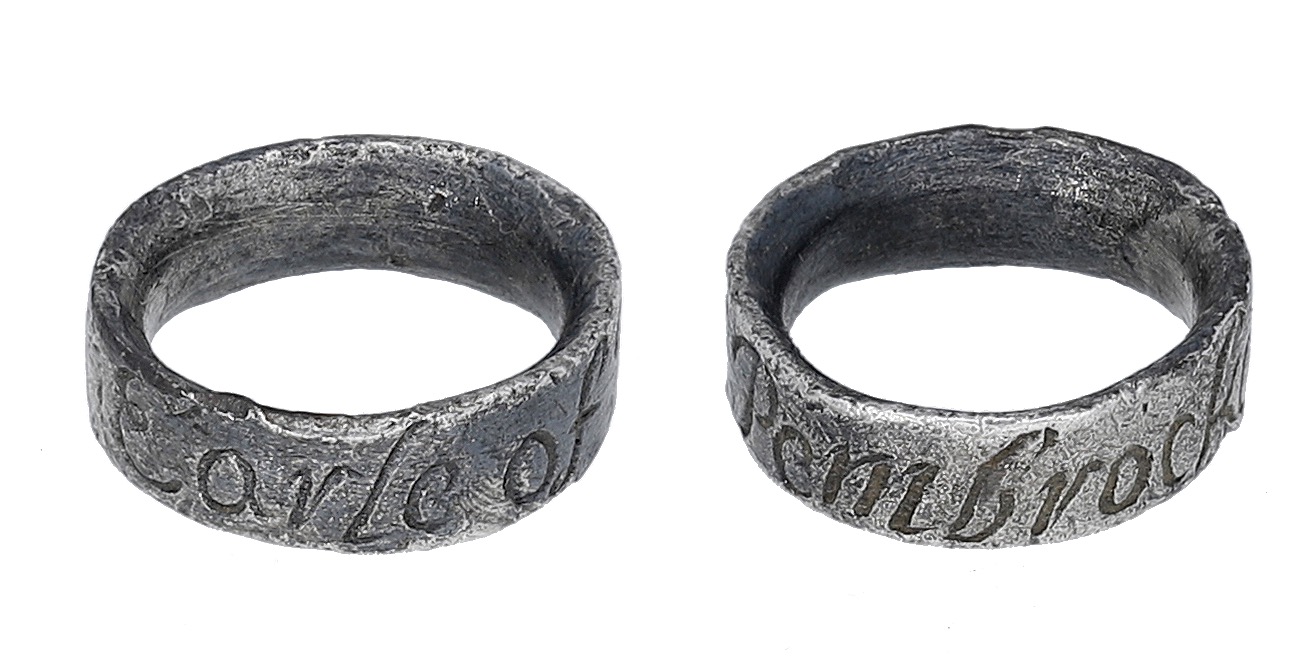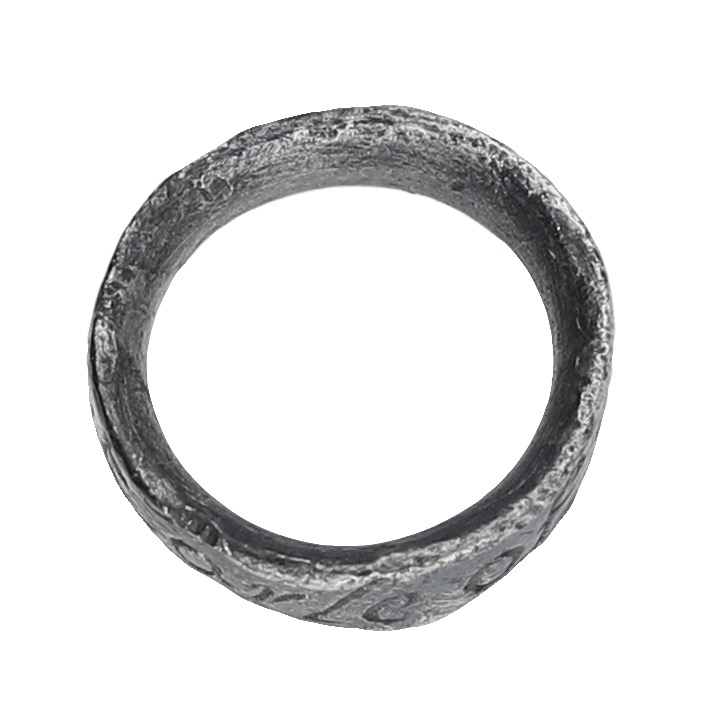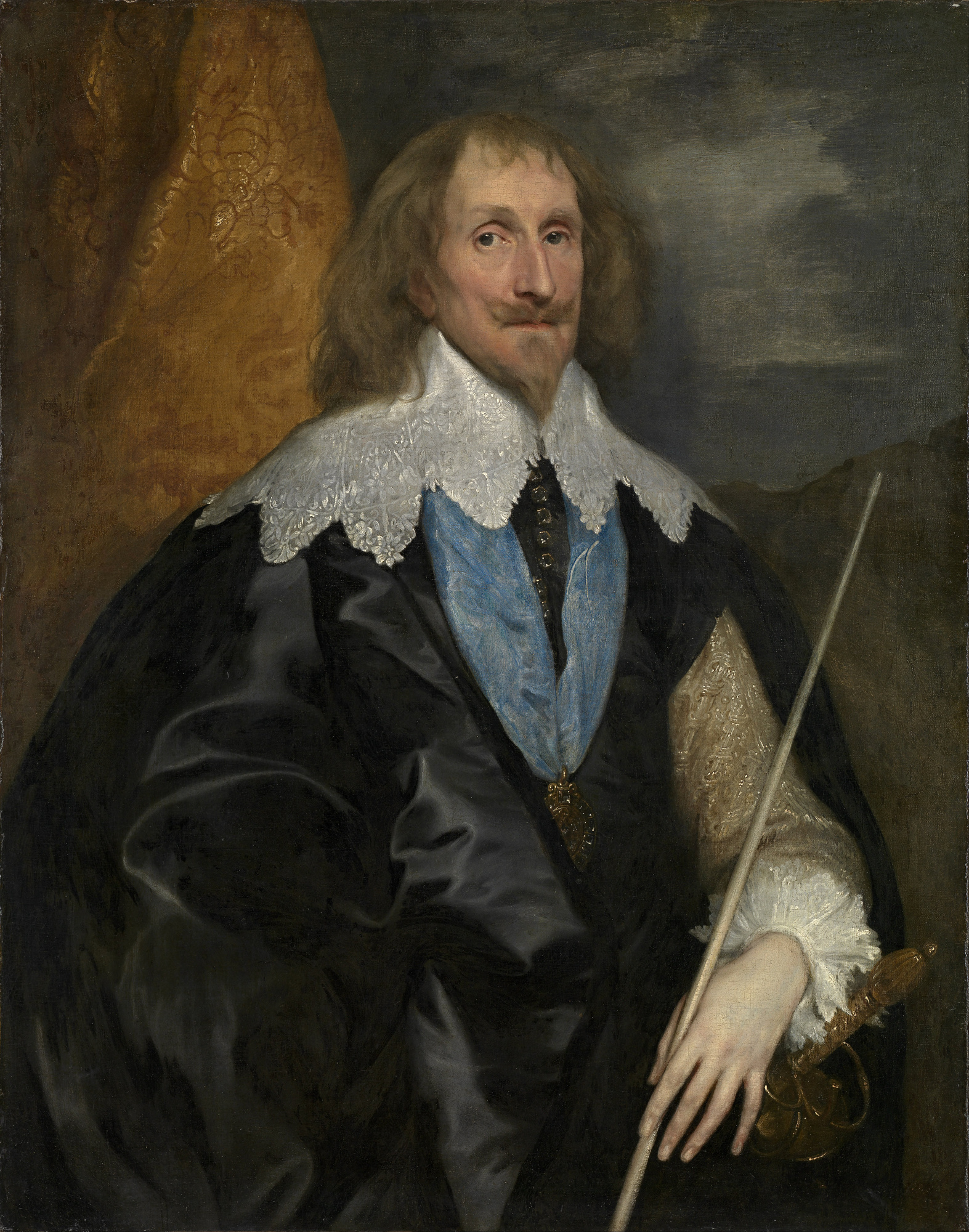A 17th century silver hawking vervel, the ring (Lewis & Richardson type B) vervel inscribed to the exterior ‘* Earle of Pembroke’, in italic script, diameter 10.3mm. £600-£800 --- Provenance: This vervel was found by a metal detectorist at Ramsbury, Wiltshire in 2023. It has been recorded on the Portable Antiquities Scheme database ref: HAMP-EE0140. The most likely candidate as owner of this vervel was the 4th Earl of Pembroke and Earl of Montgomery, Philip Herbert (1584–1650). Philip is said to have entered court at the age of 16 as a handsome young man, with great prowess in hunting and hawking. He was acknowledged as a favourite of King James I, who made him a Knight of the Garter, created him Earl of Montgomery, Keeper of the Palace of Westminster and St. James's Park, Lord Lieutenant of Kent and a member of the Privy Council. This affection remained in spite of Philip’s reputed foul mouth and quick temper. Philip became 4th Earl of Pembroke in 1630 when he inherited the title and Wilton House near Salisbury from his brother William, 3rd Earl of Pembroke. Philip’s first wife was Lady Susan de Vere, with whom he had seven sons and three daughters, he subsequently married Lady Anne Clifford. He was an active patron of the arts - including the artist Anthony van Dyck - and of literature - Shakespeare dedicated his First Folio to Philip and his brother William. As his death approached, James I recommended Philip to the favourable notice of his successor Charles. Philip accompanied Charles to Oxford in 1636, and until the Civil War entertained the King every summer at Wilton. At the King’s suggestion Philip had the front facade of the house rebuilt by Inigo Jones and his assistant Solomon de Caus. The DNB notes that the house contained stables ‘of Roman architecture, with a court and fountain…adorned with Caesars’ heads, and there were kept racehorses (some from Morocco) and carriage horses for six coaches, besides all manner of dogs and hawks.’ Philip came into conflict with Charles’s queen Henrietta Maria over differing religious inclinations, and he subsequently broke with Charles. Through the first English Civil War, Pembroke sided with the parliamentarians, although he was always one of the most moderate of them, and he maintained some loyalty to the King, trying to encourage him to accept a deal with parliament. In January 1649, Pembroke declined a role on the High Court of Justice established by the Rump Parliament to try Charles I on charges of high treason, although he agreed not to speak out against executing the King. Two other 17th century hawking vervels associated with the Earl(s) of Pembroke have been found in the environs of Wilton House (see PAS records WILT-E0B23A and WILT-B08B32). This vervel was found in Ramsbury, approximately 35 miles further north, near the town of Marlborough, Wiltshire. Condition Report There is evidence of an old repair to the band. The inscription is clear and legible although the vervel shows general wear and scuffing. Band width 3.1mm. Weight 0.79gm.
Auctioneer's Buyers Premium: 24% (+VAT)
There is an additional charge of 4.95% (+VAT/sales tax)
Vollständige AGBs












